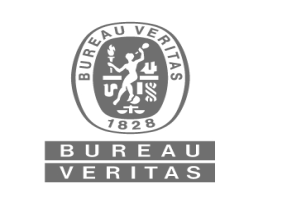Highlights
- Latitude 66 (LAT) launches RC drilling at its Kuusamo Schist Belt project in Finland
- The program targets distinct geophysical and geochemical anomalies at key prospects
- A scoping study will evaluate expansion potential while drilling enhances operational efficiency
Latitude 66 (ASX:LAT), a mining and exploration company operating in the resource sector, has recently initiated a reverse circulation (RC) drilling program at its flagship Kuusamo Schist Belt project in Finland. The project, which focuses on uncovering notable gold and cobalt anomalies, stands as a prime example of applying modern exploration techniques in a region marked by both geological complexity and potential. The RC drilling method is being employed to assess defined anomalies at the K6E and K6W prospects, located a short distance south of an existing resource base, beneath a thin layer of transported till cover.
RC Drilling Launch at Kuusamo Schist Belt
Latitude 66 has embarked on an RC drilling campaign at the Kuusamo Schist Belt project, a significant step in its exploration program. The use of reverse circulation drilling in this context is noteworthy because it is less common in Europe compared to diamond drilling, yet it offers an efficient, cost-effective alternative for sampling shallow bedrock geology. The technique enables rapid retrieval of samples, providing reliable data on the subsurface conditions beneath minimal overburden. This approach is expected to yield high-quality insights into the geophysical and geochemical anomalies that have been previously identified at the K6E and K6W targets.
Targeted Anomalies and Prospect Zones
The RC drilling program is focused on evaluating specific geophysical and geochemical anomalies at the K6E and K6W prospects. These targets have been delineated through extensive preliminary surveys and represent zones of potential mineralization within the Kuusamo Schist Belt. Positioned roughly one kilometer south of the established resource area, these prospects lie beneath a relatively thin layer of till cover, making them accessible for RC drilling methods. Detailed assessments will concentrate on delineating gold and cobalt anomalies that have surfaced in earlier prospecting efforts. The careful targeting of these anomalies is designed to enhance the geological model of the area and provide clarity on the extent of the mineralized zones.
Enhancing Exploration Efficiency with RC Drilling
RC drilling is recognized for its efficiency in both cost and time, attributes that are especially valuable in regions where traditional drilling methods may be more resource-intensive. By adopting this technique at the Kuusamo site, Latitude 66 is positioning its exploration efforts to maximize operational efficiency without compromising the quality of geological data. The method's ability to rapidly collect samples means that technical teams can quickly analyze geochemical signatures, thereby accelerating the delineation process of mineralized zones. This operational efficiency is critical in ensuring that the project progresses according to planned timelines and supports subsequent stages of exploration.
Scoping Study and Project Timeline
Parallel to the drilling operations, a scoping study is underway to assess the broader potential of the Kuusamo Schist Belt project. This study will integrate data from the RC drilling program with previous exploration results to outline possible pathways for future resource development. The study aims to evaluate the project’s expansion potential by providing a comprehensive review of the mineral resource and associated geological framework. Field data collected during the current drilling phase will be a key input, helping to refine resource models and guide further technical assessments. Equipment mobilization for the drilling program has been scheduled in the coming months, with technical findings anticipated to emerge early in the next year, setting the stage for the scoping study’s final report.
Geological Significance of the Kuusamo Schist Belt
The Kuusamo Schist Belt is renowned for its complex geological history and promising mineralization. Historical surveys and recent prospecting efforts have indicated that the region may host significant quantities of gold and cobalt, both of which are essential to various industrial applications. The current drilling program is expected to build on these findings, providing detailed information on the structure and extent of mineralized zones within the belt. Comprehensive geological mapping, combined with advanced geophysical surveys, has already established a strong foundation for exploration in this area. As RC drilling progresses, enhanced geological insights will further illuminate the potential resource base, contributing to a more nuanced understanding of the Kuusamo region.
Technological Integration and Operational Excellence
Latitude 66’s decision to employ RC drilling reflects a broader commitment to integrating modern technology with traditional exploration practices. The use of state-of-the-art equipment ensures that data collected from the drilling program is both accurate and actionable. High-resolution sampling combined with precise geochemical analysis allows the technical teams to rapidly identify zones of interest and adjust exploration strategies accordingly. This approach not only streamlines field operations but also reinforces operational excellence by reducing downtime and optimizing resource allocation. The successful integration of these technologies underlines the company’s ability to adapt to evolving exploration challenges in a competitive environment.
Strategic Impact on Regional Resource Development
The advancements at the Kuusamo project have broader implications for resource development in the region. By employing efficient drilling techniques and rigorously evaluating geological anomalies, Latitude 66 is contributing valuable insights into the potential of the Kuusamo Schist Belt. The data acquired through the current program will assist in refining the regional geological model and may influence future project planning and resource management strategies. These efforts are integral to building a comprehensive picture of the region’s mineral potential, which is of strategic importance for supporting domestic resource security in an increasingly competitive global market.
Broader Strategic Interests
Beyond the Kuusamo Schist Belt project, Latitude 66 holds a notable stake in other exploration ventures that further diversify its resource portfolio. One such interest is in Carnaby Resources’ Greater Duchess copper project in Queensland, where recent drilling activities have yielded promising results. This diversified approach underscores Latitude 66’s commitment to developing a robust and balanced portfolio across different mineral commodities. The integration of multiple projects into the corporate strategy highlights a methodical approach to resource exploration, leveraging synergies between various initiatives to enhance overall project efficiency and technical understanding.
Latitude 66’s current exploration activities at the Kuusamo Schist Belt demonstrate a clear focus on employing efficient, modern techniques to unlock the potential of a geologically promising region. The RC drilling program, coupled with a comprehensive scoping study, is set to deliver critical data that will inform future development decisions and further delineate the region’s mineralized zones. By harnessing both technological advancements and strategic project management, the company reinforces its role as a dynamic player in the European exploration landscape. As field operations continue and technical insights are integrated into broader project evaluations, Latitude 66 is poised to contribute significantly to the understanding and development of critical mineral resources in the region.




